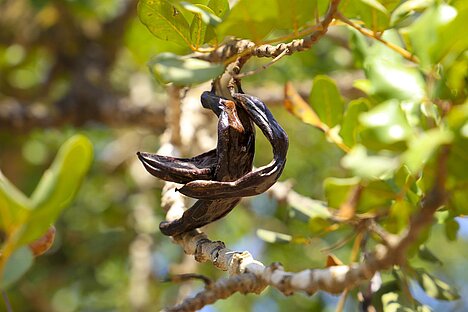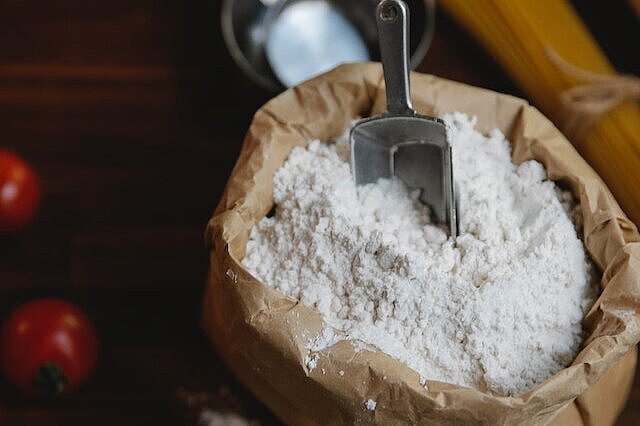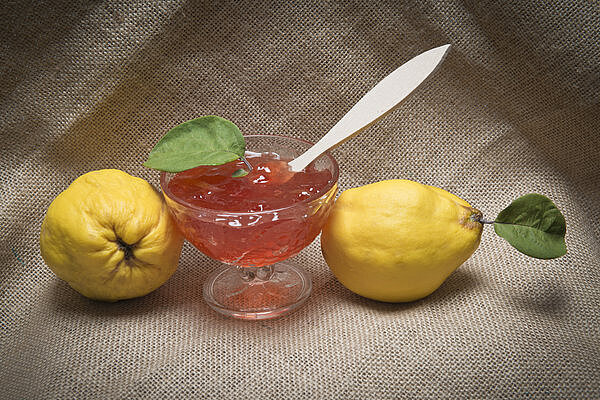Carob meal

You may have heard of carob meal or even eaten it in your muesli or yogurt. But what is carob meal and can it be healthy for dogs? In this article, you can find out more about this ingredient and its advantages and disadvantages for your four-legged friend.
What is locust bean meal?
Locust bean meal is a by-product of the production of locust bean gum, which is used as a thickening agent in the food industry. Carob meal consists of the dried and ground shells of the carob fruits that grow on carob trees. These trees originally come from the Mediterranean region, but are now also cultivated in other regions of the world.
Carob meal has a sweet taste and a dark brown color. It contains a lot of fiber, which can aid digestion, as well as some minerals such as calcium, iron and magnesium. It also has a low fat and sugar content and can therefore be used as a low-calorie ingredient.
What are the benefits of carob meal for dogs?
Carob meal can have several benefits for dogs when fed in moderation. Firstly, it can help to regulate blood sugar levels as it slows down the absorption of glucose in the intestines. This can be particularly important for dogs with diabetes or who are overweight. It can also support the intestinal flora and prevent or alleviate diarrhea or constipation. This is because carob meal contains both soluble and insoluble fiber, which can stimulate intestinal movement and bind water.
Carob meal can also be used as a natural colorant for dog food to make it look more appetizing. As it contains no artificial additives, it is better tolerated by dogs than other colorants.
What are the disadvantages of carob meal for dogs?
Carob meal is not suitable for all dogs and can also have some disadvantages if it is fed too much or too often. Firstly, it can lead to flatulence or stomach problems as it produces a lot of gas in the intestines. This can be particularly problematic for dogs with a sensitive stomach or an allergy to carob. It can also impair the absorption of other nutrients in the intestine as it binds to them and excretes them. This can lead to a lack of vitamins or minerals if the dog's diet is not balanced.
Carob meal should therefore only be given in small quantities and as a supplement to normal dog food. It should also not be used as a substitute for other sources of fiber such as vegetables or fruit, as these contain more vitamins and antioxidants.
How do you feed carob meal to dogs?
If you want to feed your dog carob meal, there are a few things you should bear in mind. Firstly, you should always make sure that your dog drinks enough water, as carob meal needs a lot of liquid to swell and be digested. Secondly, you should slowly increase the amount and observe how your dog reacts to it.
Carob meal is a by-product of the production of locust bean gum and consists of the shells of carob fruits. It contains fiber, minerals and has a sweet taste. For dogs, it can regulate blood sugar levels, aid digestion and act as a natural colorant. However, excessive consumption can lead to flatulence, stomach problems and nutrient deficiencies. It should therefore be given in moderation and as a supplement to the normal diet. Particular attention should be paid to the dog's water intake.
If you notice any signs of hypersensitivity or poisoning in your dog, you should see your vet immediately. We are not a substitute for a vet, but we try to be as accurate as possible. Every dog reacts differently and we recommend you get a second opinion or consult your vet if in doubt.
Stay healthy and take good care of your four-legged friend!😊
Similar to Carob meal
Guar gum, also known as guaran or guar gum, is a carbohydrate obtained from the seeds of the guar bean. The guar bean is a legume that originally comes from India or Central Africa and is now mainly...
Xanthan gum is a thickening agent obtained from the fermentation of sugar by bacteria. It has the property of gelling and stabilizing liquids. This means that it prevents the components of a product...
Agar-agar is an extract from red algae, which mainly grow in Asia. It has a gel-like consistency and can be used as a thickening or gelling agent. Agar-agar is tasteless and contains no animal...
Pectin is a plant polysaccharide found in the cell walls of fruit and vegetables. It is a natural gelling agent that is released when fruit is cooked or frozen. Pectin is often used as an additive...



